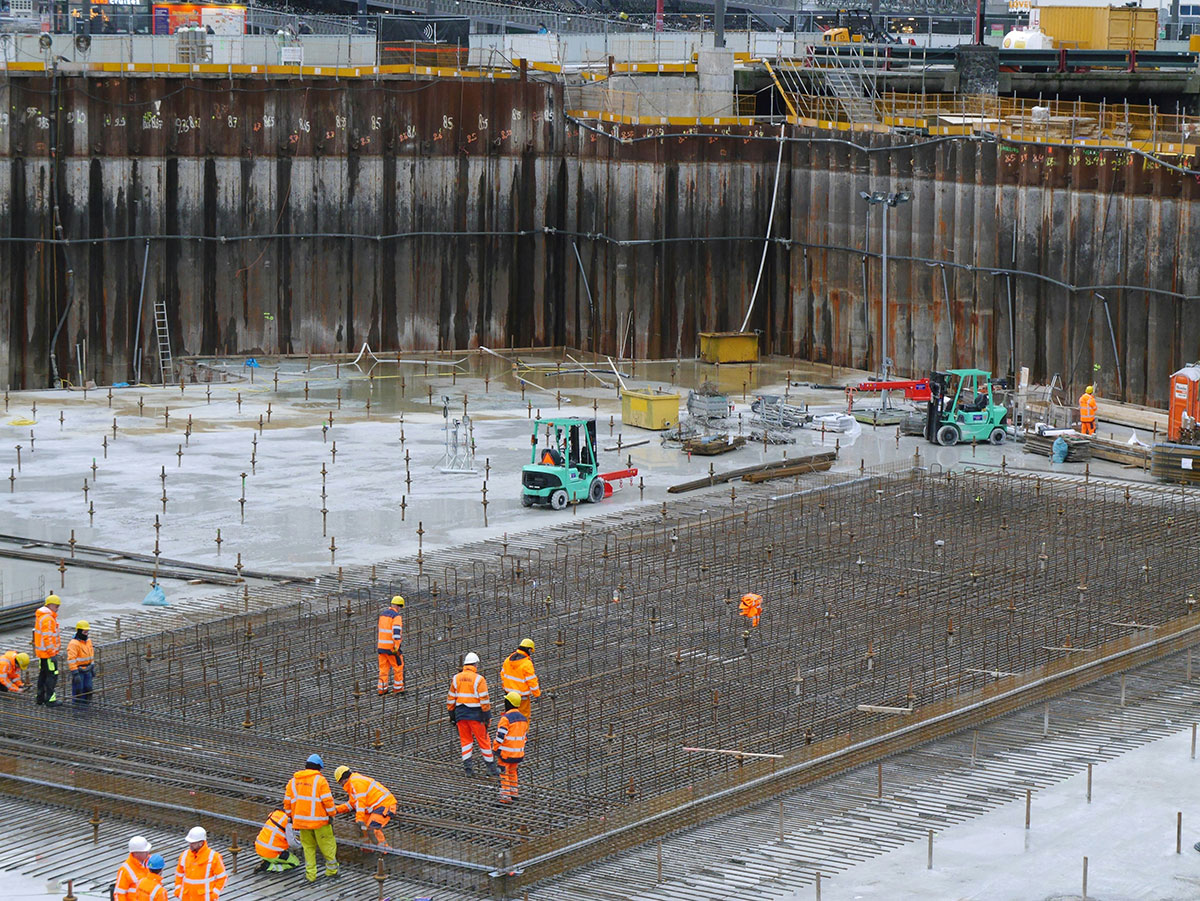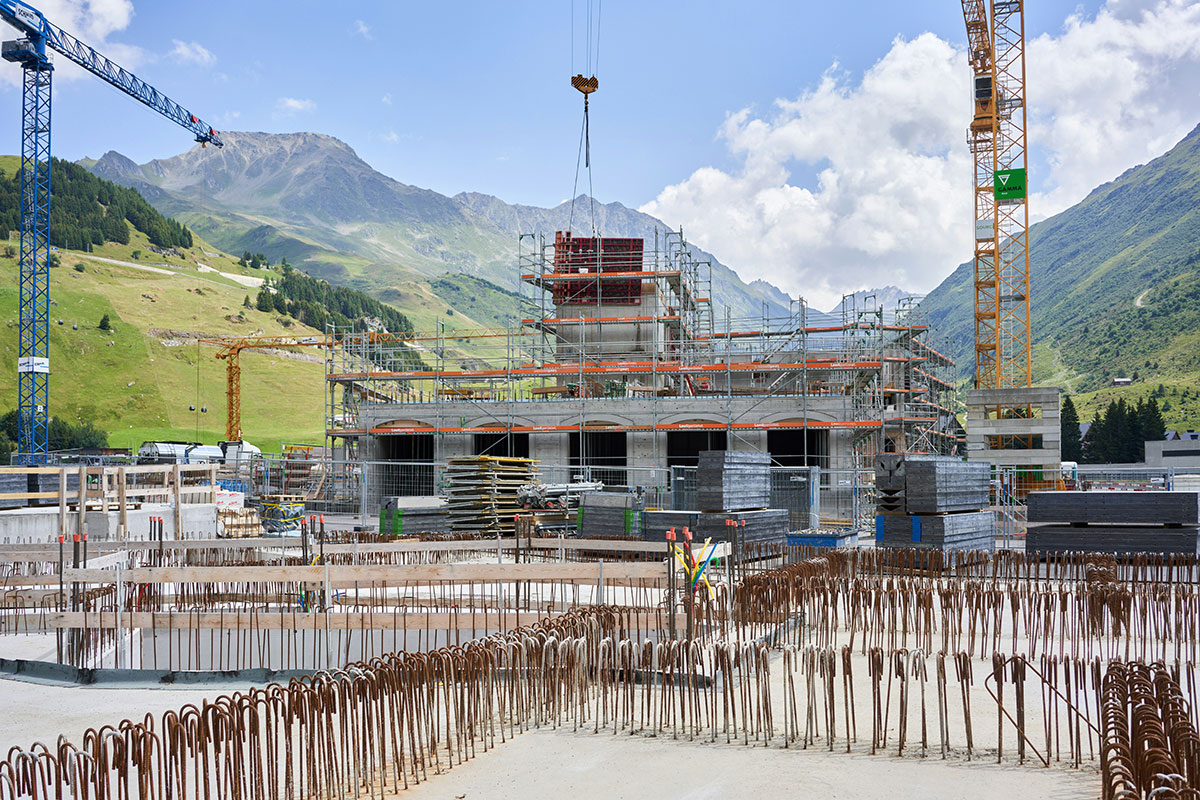Earlier this year, the Digital Builder blog of Autodesk, the US company behind well-known 2D and 3D design software such as Autocad and Revit, published a report on trends in the construction industry for the current year (2024). In the introduction to the report, we read that the main challenges the sector will face are supply chain disruption, inflation and labour shortages. However, citing good prospects (according to Reportlinker, the compound annual growth rate of the construction industry will be 17.2% globally until 2028), Autodesk says that the best way to prepare for the future is to “stay informed and adapt to new trends”. This idea of being up to date and prepared is precisely what drives us. Follow us.
Digital Builder has called on more than 30 professionals to try to grasp what will be the most important trends in the construction trade in the immediate future. From all of them, and with your attention in mind – so that we do not make you read repetitive, irrelevant information or information that goes beyond what is acceptable – we have extracted what seems to us to be the most outstanding of the report. So, let’s take a look at our summary of this sort of oracle that Autodesk is launching at the industry:
Kelly Barber, division chief in systems management at the Pennsylvania Department of Transportation, assures us that “some of the biggest construction trends and innovations (…) are the use of AR and drones“.
On the other hand, from India, Akshay Barde, EHS executive at Oberoi Realty Limited, says that his country expects “a rise in modular construction methods to enhance efficiency and address housing demands“.
But listen to James Niyonkuru Bicamumpaka, senior project engineer at Webcor Builders: “I believe in 2024 we will see increased use of construction robots as their quality of work, safety metrics, cost savings, and schedule-saving opportunities become more and more apparent across the industry”.
For his part, Stephen Brooke, digital delivery project director at Burns & McDonnell, we read, says that “we’ve just merely scratched the surface for AI in the industry and this year is going to be huge in determining which innovations will provide the most value and give us better data”. In doing so, he is signalling the significant support that AI will represent in the construction industry in the near future.
But Brad Buckles, vice president of technology and innovation at Charles Perry Partners, Inc. delves into another aspect of the trade: “Prefabricated construction should be a focus in 2024. And again: ” it is a must that we rapidly invest in continued automation and robotic technologies to compensate for the labor shortage”. An Autodesk representative, namely the executive vice president of design solutions for architecture, engineering and construction, Amy Bunszel, confirms this: “I have seen some remarkable projects that showcase the benefits of industrialized construction“.
Now it’s Ariel Castillo, chief innovation officer at Miller-Davis Company, who points to a new prediction, when he says that “our industry will maintain its course toward greater integration and collaboration, placing significant emphasis on harnessing Common Data Environment solutions”, as well as predicting “more extensive utilization of BIM“.
A new idea comes, however, from Mark Dyke, Professor of Construction Technology and Management at Ferris State University (USA). Indeed, he says that “mental health and worker well-being are gaining well-deserved recognition and awareness across the construction industry”. However, Tim Gaylord, director of innovation at DPR Construction, says that “robotics is gaining significant momentum as it supplements our craft and removes our teams from harmful conditions”. In contrast, Allison Scott, director of customer experience and industry advocacy at Autodesk itself, points out that “as seasoned professionals retire, we’re officially no longer replacing 1:1 the talent we have lost”. He adds that as new generations enter the workforce, “we will continue to see the acceleration of digital transformation of this industry pressured in part by these digital natives“.
It is now Mark Jason Villanueva, corporate director of BIM at Newcon Builders Pte Ltd., who is focusing on the labour aspect of construction trends, to ensure that “remote work will be a thing”. He predicts that “controlling the cranes, trucks, and other construction vehicles remotely“, or “off-site construction, such as prefabrication and modulars“, will become “the new norm, facilitated by a 3D printer“.
Sidharth Haksar, senior director and head of construction strategy and industry collaborations, also at Autodesk, has something to add: “one prominent trend is the increased focus on preconstruction, especially with a strong emphasis on multi stakeholder collaboration in the planning process”. In addition, “automation is set to play a more significant role (…), specifically, automation in the invoicing and payment process“. Finally, “there is a growing trend towards self-performing by GCs as a strategic response to the industry labor shortage“.
Maria Fernanda Olmos, global director of digital integration at Unispace Global, follows with a tally of construction trends, saying: “the industry is poised to witness a sustained adoption of digital technologies (…) facilitating increased digitization and automation“. Andrew Pangallo, director of major construction projects at the Indiana Department of Transportation, adds a significant nuance: “one of the biggest construction trends I see in the industry is the increasing collaboration between designers and contractors on projects”. And “on a larger industry-wide scale, investment in more technology and tools is critical to bringing a younger generation into the workforce”.
From another perspective, Olivier Lepinoy, founder of Hyper Construction, says that in the immediate future we will see a “increased emphasis on green building practices, stricter energy efficiency standards, new sustainable materials and construction methods“. And Aaron Perry, head of digital design at Allford Hall Monaghan Morris chimes in when he says that “retrofitting buildings presents an amazing opportunity and challenge for the industry to embrace responsible and sustainable practices“.
We close the Autodesk oracle, which we hope you found useful, with the testimony of Tomislav Zigo, chief technology officer at Clayco: “I strongly believe in the vast potential of quantum computing“. After all, “there is a world of emerging technologies that will soon have a substantial impact on the construction industry and the Quantum computing’s potential to revolutionize the industry should not be overlooked”.
Source: Digital Builder.









